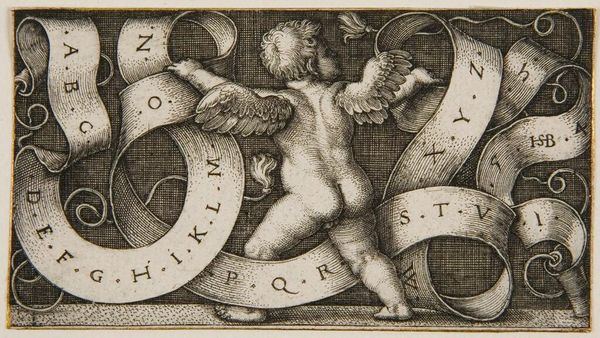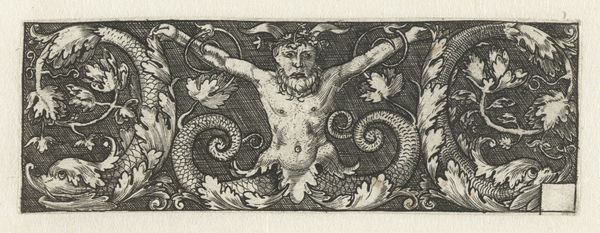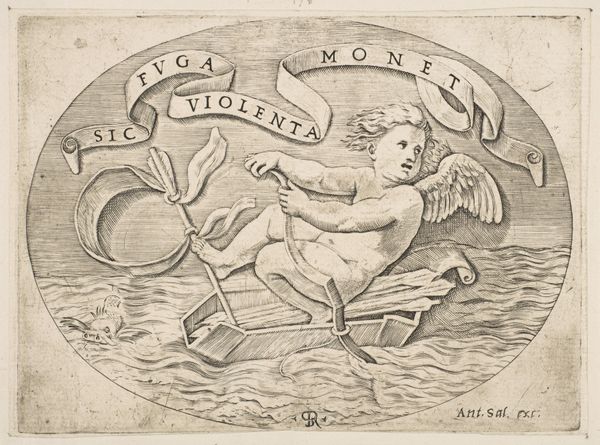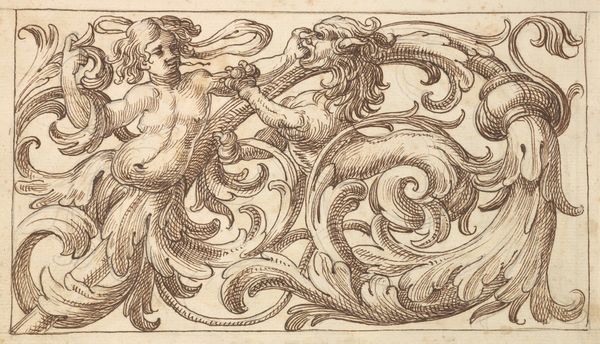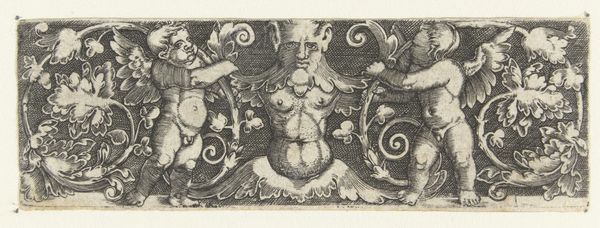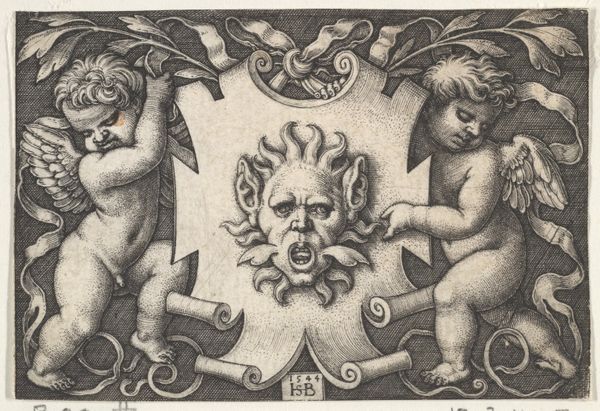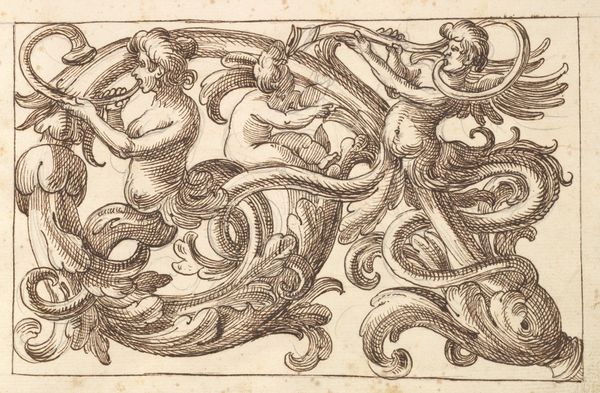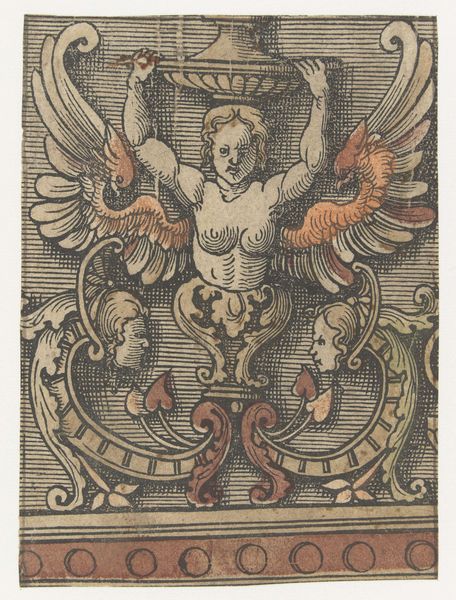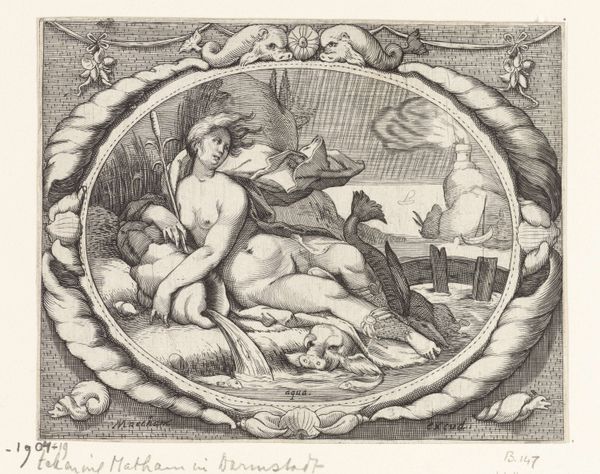
Genius Surrounded by a Banderole Showing the Alphabet 1542
0:00
0:00
drawing, print, engraving
#
drawing
#
allegory
# print
#
figuration
#
11_renaissance
#
northern-renaissance
#
engraving
Dimensions: Sheet: 1 3/4 x 3 1/8 in. (4.4 x 7.9 cm)
Copyright: Public Domain
Editor: This engraving, "Genius Surrounded by a Banderole Showing the Alphabet," was created by Sebald Beham in 1542. I’m struck by how playful it is—the winged figure seems almost caught mid-dance with the alphabet unfurling around it. What symbols or deeper meanings do you find in this piece? Curator: I see a fascinating interplay of classical and humanist ideals. The putto, the winged child, represents genius, or inspiration. Consider its placement. It doesn’t simply *hold* the alphabet; it’s intertwined with it, suggesting that learning and creativity are inseparable. The alphabet itself, meticulously rendered, becomes more than just letters. Editor: So the alphabet is acting almost as a character itself? Curator: Precisely. It's a cultural inheritance. Think about the Renaissance obsession with rediscovering and mastering classical knowledge. The alphabet is a fundamental building block. The image subtly asks: how do we embody and expand on the wisdom of the past? Consider the artist's signature tucked into the banderole – 1SB. Even that mark gains weight, participating in the symbolism. What impression do you get from that? Editor: It reinforces the idea that creating is genius! That his mark isn’t just a signature but his participation with genius itself. That is powerful to contemplate. Curator: Exactly! In effect, Sebald Beham elevated learning itself to an artistic act. Knowledge becomes beautiful, creative, and, like the putto, full of life. Editor: This really shifted my perspective; seeing how the individual components symbolize that historical humanist cultural memory elevates this artwork.
Comments
No comments
Be the first to comment and join the conversation on the ultimate creative platform.

